About Michelle Allison: Wood Turned Art
About Michelle Allison
I have worked with wood for most of my adult life, having drifted into the fretted instrument trade after a few uninspired years in graduate school in the late 1960’s. I put in an 18-year stint as a fretted instrument builder, restorer, repairman and small music store owner. During a subsequent 25-year career as a mental health professional, I maintained a wood working shop and built furniture on the side. From about 2002 until 2009 I worked as professional artist, exhibiting at a variety of high end art and fine craft shows. With the economic implosion of 2009 I returned to my mental health career. I am Connecticut Licensed Marriage and Family Therapist operating a full time private practice since 2010.
To those who have followed my work over the years, it may be useful to know that in 2016 I acknowledged my long denied, but truly authentic gender identity. On June 14, 2016 Michelle Allison was legally born and, I currently live and work as a fully out trangender woman.
When I began turning wood in 1997, initially I made no connection between those turned vessels and the musical instruments I had previously built and worked on. About four years into wood turning, I did realize, however, that there was no technical reason why I could not transform turned vessels into colorful objects.
Nevertheless, when I first started applying this finish to my work some ten years ago, I felt both tentative and wary. It seemed as if as if I was venturing into largely unknown territory. The shock value when presenting my work was pretty high in most woodturning circles for a while. There were frequent skeptical reactions. When exhibiting in venues with other media, the response was far more positive. Outside wood turning circles, the most common first impression is still that my work is glass or ceramic: if an object is colorful and reflective, who would expect it to be made of wood? At this point, however, the general use of color is only one of many possibilities for wood artists. I assert that my use of color exhibits a unique aesthetic that dramatically changes the perception of the surface. This in turn alters the overall percption of the object such that the form is visually elaborated; it could be said to be: "transformed."

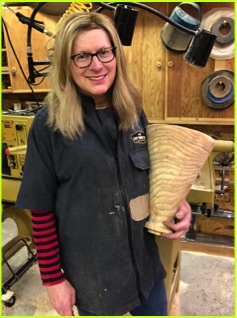
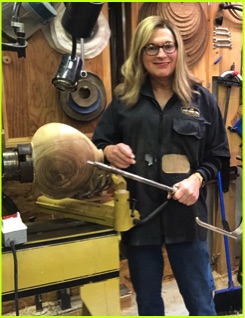
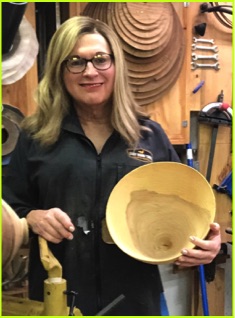
z
.8 About the Work
Wood species:
Northeastern hardwoods, including: ash, hard and soft maple, cherry, birch, elm, willow burl, oak burl, and box elder, with the occasional red cedar, red pine.
Wood features:
Burls are highly figured, uniquely grained, round growths appearing on the sides of trees Their origins are somewhat vague; they are thought to be caused by viruses or trauma. Relatively few trees have burls, but if you consider enough trees, they can be found. Highly sought after, they are commercially valuable for furniture accents, car dashboards, and carving, in addition to wood turning. Often a tree has many burls or many trees in a local area will have burls.
Spalted (German for ‘spoiled’) wood is the result of natural decay. While most decaying wood is unremarkable, occasionally two fungi collaborate to produce a dramatic pattern and figure of black carbon. Depending on the stage of decay, spalted wood can be structurally compromised. It is often soft or punky and feels very light. It is generally quite challenging to obtain good surface integrity or apply a high gloss finish. The best spalted woods have lots of blond sapwood, such as maple.
Bark inclusions are areas of bark surrounded by wood. The tree has literally grown around the once exterior bark. If large these can present structural problems.
Ambrosia (wormy) maple has been attacked by the parasitic ambrosia beetle. This insect bores into the tree (typically the soft maples) while carrying a fungus which stains the tree in a distinctive radiating pattern. This effect is most evident when the tree is viewed in cross section. Box elder has similar parasitic bettle which leaves reddish stains in that species.
Crotches are where two trunks or branches) come together as one. There is a feathering effect or other irregular figure at this junction. A good knot can provide much of the same effect. Crotches produce some interesting effects when they dry.
Vessel Types:
Open forms, including bowls that typically are wider than they are tall; vases which are the same or taller than wide.
Natural edge involves wood orientation so that the bark side of the tree forms the rim of the vessel. Generally open forms, but can include any type of turning including hollow forms and plaques. Bark from freshly cut trees stays attached best; otherwise it’s a natural edge, but not a bark edge.
Closed forms in which the rim of the vessel is smaller than the widest part of the vessel. The interior of the vessel is readily visible and accessible.
Hollow forms: any shape where the opening is small enough to require blind access with the tools (bottles, jars, Southwest ollas, etc.)
Turning Techniques:
Green turning (working with unseasoned or wet wood) is my preferred way of turning. The advantages of this technique are many: found green wood is readily available, and it machines better and produces less dust. Once turned to a thin, finished dimension, with proper technique, green wood can be successfully dried within days or a few weeks at most. Cracking (or checking) is eliminated or greatly minimized. Thick sections of wood would take years to dry and would inevitably crack while doing so. For me, the distortion that comes with drying becomes an important element of design. That which is round becomes wavy, elliptical, or rippled Once dry, it’s on to finishing
Hollow forms (if tall) are turned with the long grain running along the axis from the bottom to the top of the vessel; shorter forms might be oriented with the grain across the width (face grain). The exterior is shaped first, and then the interior is removed to the desired wall thickness (for me about 1⁄4 inch, occasionally thinner). The interior removal involves working with tools through the top opening; the smaller the opening the more challenging the piece. Access to the wide parts of the vessel is accomplished with long, articulated or curved tools. Hollowing tools have smaller cutting heads, and remove material far more slowly than the gouges used for open bowls. Frequent stops to vacuum or blow out shavings also slow down the process. At the final stage, I use a laser guided jig to obtain a uniform wall thickness. The purists scorn this aid and do it the ‘low tech way’, using exclusively calipers, sound and experience; to each his own. Nesting or coring is to make several open vessels from the same piece of wood, ranging from large to small. Each time the core is removed intact with a long curved parting tool, providing a new and smaller vessel until there is no wood left.
Surface Treatments :
Carving is done after a piece has been turned. It can involve a spiked top edge or a highly sculptural effect in wwhich most of the original turned form is transformed into a form with a turned out lip or collar.
Piercing involves removing wood to form a delicate web-like or other open pattern. The work needs to be quite thin (close to one sixteenth inch). Piercing is done with high speed, hand held rotary tools.
Coloring done with transparent water based dyes and/or acrylic paint is the most distinctive feature of my work. The molecular nature of these dyes is to enhance or ‘pop’ the wood grain rather than mask it. Sometimes colors are layered on top of each other or shaded for ‘sunburst’ finishes. The irregularities of grain and figure provide interesting color effects due to the differential rate of absorption. These metal complex dyes represent a technological advance over traditional aniline dyes in terms of being light fast. However, they are for interior use only and should never be exposed to direct sunlight.
Airbrushing is used for shaded and shadow effects. Masking and stencils provide decoration. Dyes can be ragged on or sprayed, but paints and lacquers must be airbrushed.
Texturing involves applying a wire brush or a cutting device to the moving surface on the lathe. A variety of effects are possible based on the type of cutter, the orientation of the wood on the lathe and lathe and/or cutter speed.
Leafing and patinizing involve applying copper or silver leaf to the vessel, using either variegated leaf from the factory or applying patinas with chemical solutions
Finishes:
The hallmark of my work is a vibrantly colored turning with a built up, high gloss finish. Over a dyed or painted surface this finish provides a depth and clarity that is unparalleled. Although alcohol and water resistant, this finish can scratch. Wear on the polished surface detracts from the ‘wet’ look, so the vessels are typically decorative rather than functional. Built up, film finishes can chip off under impact. All high gloss, built up finishes are very labor intensive (perhaps half the work done to produce a vessel); there are no short cuts to obtaining the desired result.
Sprayed water based lacquer mimics the traditional solvent finishes, with none of the toxicity or fire hazard during application. Lacquer is sprayed in sufficient thickness (8-10 coats) then fine sanded level and dead flat. The next steps are to finish coat, and then sand and buff with polishing compounds to a high gloss.
Polyurethane/oil varnish can also achieve a high gloss finish. About ten coats are carefully brushed or wiped on to achieve a well built up finish. . I prefer it for open grained woods such as ash and oak, as well as burls and wormy wood. This works well on a surface with some texture, either natural or man made.
Tung oil varnish is a ragged-on finish. It is a gives a traditional natural looking appearance as well as being functional .The oil penetrates and seals the wood becoming part of the material. Application of one or two additional coats builds up a thin film finish. The work is then buffed and polished resulting in a satin or semi gloss look. The finish is food safe and alcohol and water resistant. Being thin and part of the wood surface, it cannot chip. If it wears through it can be easily renewed with an additional coat or two.
Walnut oil is fully organic with no added driers; not as durable as tung oil but my prefrence for anything involving food as it does harden naturaly into a surface film.
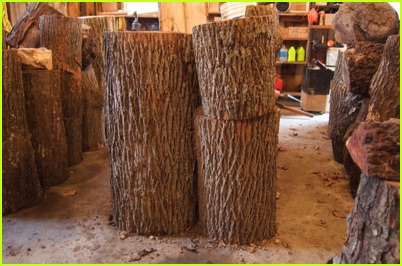
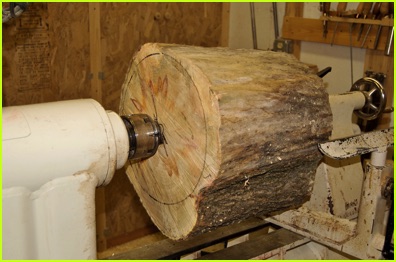
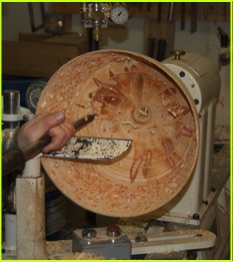
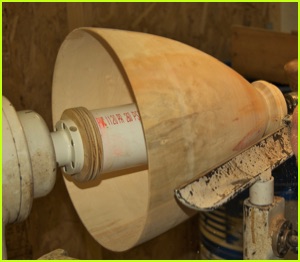
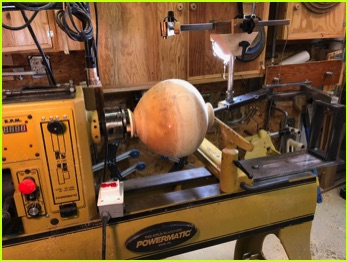
z